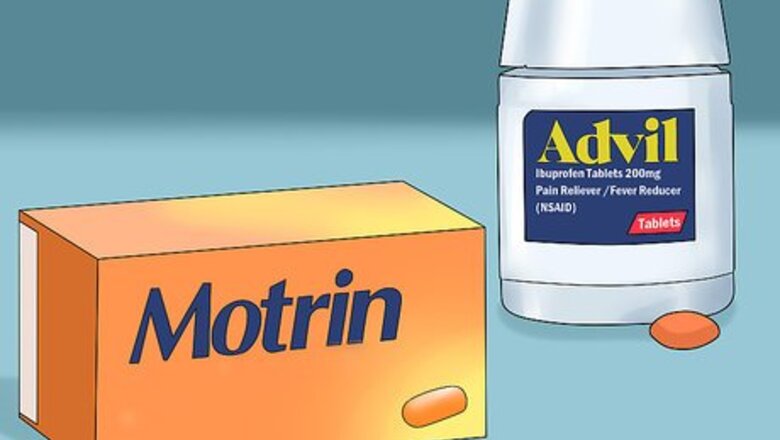
views
Getting Quick Pain Relief
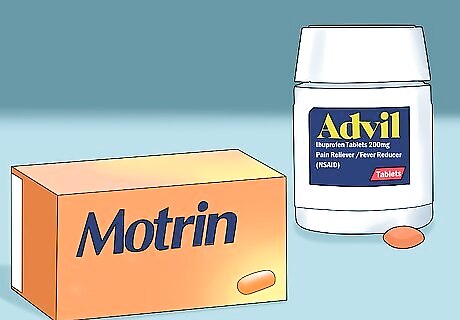
Take over-the-counter NSAIDs to relieve pain and swelling. NSAIDs like ibuprofen (Advil, Motrin) and naproxen (Aleve) help reduce inflammation, which relieves your pain. This can provide you with fast pain relief. Ask your doctor before taking NSAIDs, as they’re not right for everyone. Always read the label and take the medication only as directed. It’s possible that the medication won’t relieve all of your pain, but it isn’t safe to increase your dosage. If you can’t take NSAIDs, try over-the-counter acetaminophen (Tylenol) instead. Although it won’t help with swelling, it can help with your pain.
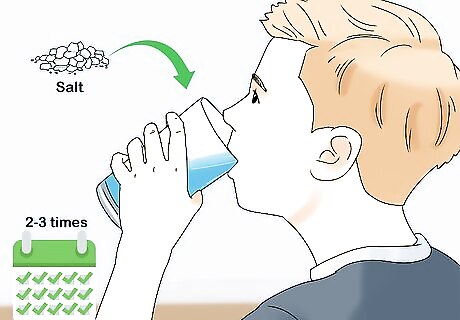
Rinse your tooth with warm salt water 2-3 times a day to soothe the pain. Stir 1 tsp (5) of salt into 1 cup (240 mL) of warm water. Take a sip of the water, but don’t swallow it. Instead, swish the salt water around your mouth, then spit it out. The best time to rinse with the salt water is after your meals, as it will help remove food particles from around the tooth. Plus, the salt sanitizes the area. The salt water won’t cure your abscess, but it may help reduce your pain and will help keep the area clean. Don’t swallow the salt water once you’re done swishing. Doing so can cause you to have an upset stomach.

Avoid using a hot or cold pack on the abscess. You may be tempted to put a warm or cool compress on your tooth to help with the pain and swelling, but this isn’t a good idea. Since the swelling is caused by an infection and not inflammation, the hot or cold pack won’t help the swelling.
Making Lifestyle Changes
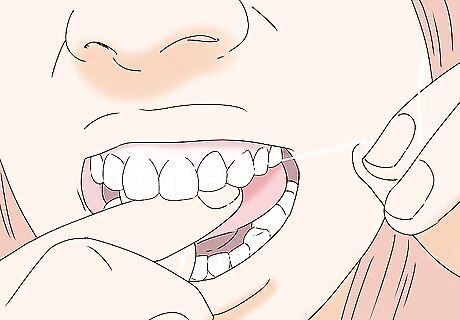
Floss around your tooth after meals to reduce pain from food particles. Pieces of food can worsen your abscess pain by clogging the area around the abscess. This adds to the pressure and inflammation around the area, causing you more pain. Although flossing might not be comfortable, it can help you reduce pain caused by food particles. Clean around the abscessed tooth immediately after you eat. If flossing around your tooth is causing you intense pain, avoid flossing around the tooth. However, see your dentist immediately to get the tooth treated.
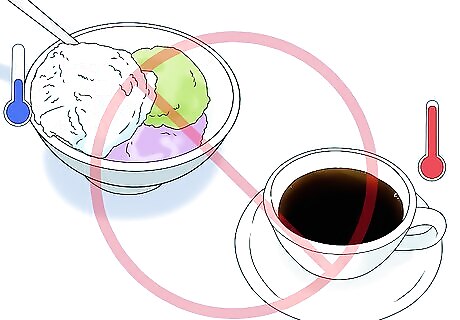
Cut out cold and hot foods until your pain goes away. Extreme temperatures will cause pain in your tooth, sometimes extreme pain. That’s because the protective layers on your teeth are eroded away, leaving the sensitive part of your teeth exposed. As an example, temporarily avoid things like coffee, hot or iced tea, cold drinks, ice cream, or hot soup.
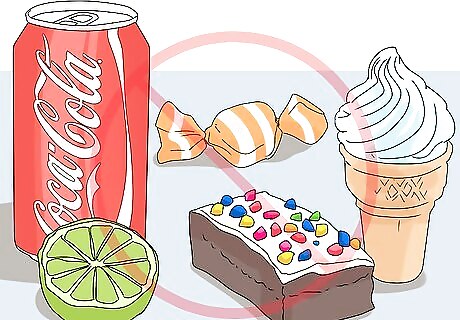
Avoid sugary and acidic foods and drinks, which can aggravate your tooth. These types of foods alter the pH in your mouth, which can increase the pain and irritation in your abscessed tooth. Until your tooth is treated, it’s best just to cut these items out of your diet. For instance, foods like citrus fruits, candy, baked goods, and ice cream aren’t good options while you’re dealing with an abscess. Similarly, stay away from drinks like soda, juice, and sweet tea.

Sleep with your head elevated to reduce pressure and pain. Pile the pillows below your head so that it’s propped up. This will prevent more pressure from building up in your tooth, which could cause more pain. If you have a wedge pillow, use it to keep your head propped up while you’re sleeping.
Treating an Abscessed Tooth

Visit your dentist to get your infection treated. Call your dentist and let them know you think you have an abscess. They’ll examine the area and tap on your tooth to see if it feels sensitive. In some cases, they may also apply heat or cold to the tooth to see if it causes discomfort. Then, they’ll do X-rays to determine if you may have an abscess. This will help them make a diagnosis and recommend treatment. If the dentist thinks the infection has spread, they may recommend you get a CT-scan to check for the infection. Since an abscess is caused by a bacterial infection, you may need to treat it with an antibiotic. It’s unlikely that an abscess will go away on its own.
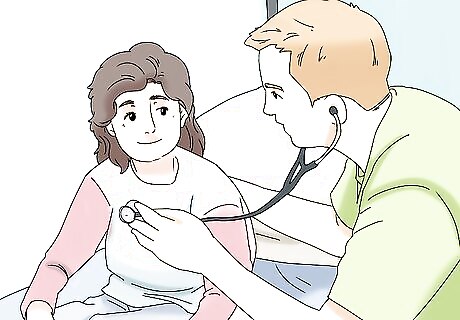
Get emergency medical care if you have fever, chills, and nausea. You may also experience vomiting. These symptoms are serious and may be a sign of a worsening infection. Your infection may have spread, so you need prompt medical treatment. Visit your doctor for a same day appointment or go to an urgent care clinic.
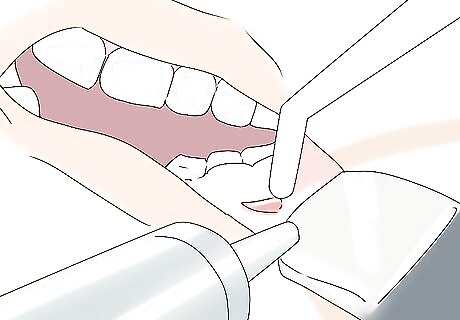
Allow the dentist to drain your abscess to help it heal. First, the dentist will numb the area around your abscessed tooth. Then, they’ll make a tiny cut over the abscess to drain away the pus. Next, they’ll wash the area with a salt (saline) solution to sanitize it. If there’s still swelling, they may put in a tiny rubber tube so the remaining pus can drain away. As your body tries to fight the infection, it sends white blood cells to the area. This produces pus, which collects in your tooth and can’t drain away. Instead, it causes pressure and pain inside your tooth. Draining away the pus will provide you with pain relief. This procedure may cause discomfort, but it shouldn’t be painful.
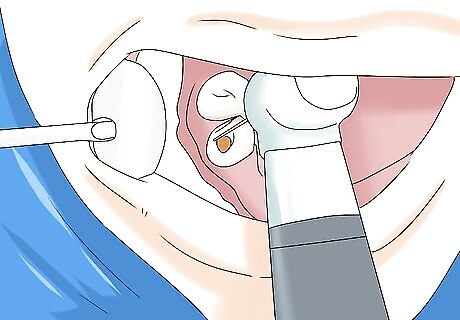
Let your dentist do a root canal to help save your tooth. After numbing the area around your tooth, your dentist will drill down into your tooth. Then, they’ll remove the infected pulp in your tooth and drain your abscess. Next, the dentist will refill your root canals and tooth. Finally, they’ll cap your tooth with a crown to protect it. A root canal can cause a lot of discomfort, but your dentist can provide pain relievers to help you recover.
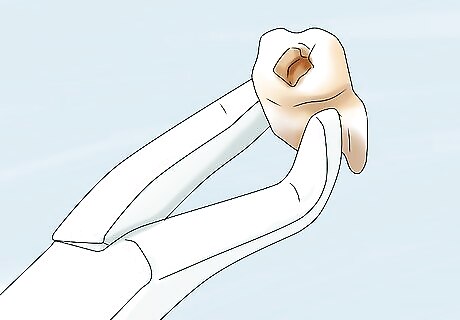
Let your dentist pull the infected tooth if it can’t be saved. Your dentist will numb the area around your tooth, then they’ll use a professional tool to pull out your tooth. Next, they’ll drain away the abscess and clean the area with a salt (saline) solution. You should get pain relief once the abscessed tooth is gone. Your dentist may recommend this for a back tooth. Getting your tooth pulled is often the least expensive procedure.
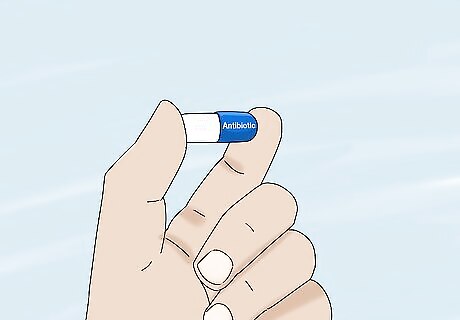
Take an antibiotic if your infection has spread. Since an abscess is caused by a bacterial infection, your dentist may give you an antibiotic to treat it. If the infection has spread to other teeth or parts of your mouth, you may need the antibiotic to get rid of it. Make sure you take all of your medication as prescribed. Your tooth should start feeling better after a few days of taking the antibiotic. However, you need to finish the entire course of treatment, or the infection could come back. Your doctor may also prescribe an antibiotic if you suffer from a weakened immune system.















Comments
0 comment